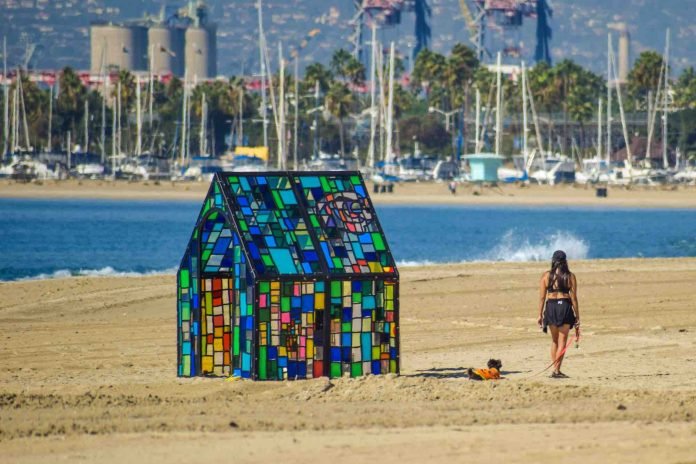My ongoing series, Long Beach Lost, was launched to examine buildings, spaces, and cultural happenings that have largely been erased, including the forgotten tales attached to existing places and things. This is not a preservationist series but rather a historical series that will help keep a record of our architectural, cultural, and spatial history.
Editor’s note: This series first appeared on Longbeachize in 2017 and 2018; some articles have been republished, updated, and/or altered.
Want to read previous Long Beach Lost articles? Click here for the full archive.
“It’s a sign of hope, in its true sense, bringing light and love—and how can you not appreciate that?” POW! WOW! Long Beach (PWLB)’s Cassy Leeman said as she stands in front of Tom Fruin’s 2019 sculpture Camouflage House, its last day on the sands of Long Beach before being hauled to Descano Gardens in the morning.
An extension of PWLB’s sculptural arm, Art Renzei, that has stretched across the shoreline, the glass house has been its most popular attraction, greeting beach-going passersby since it landed on the shore with its sun-drenched, colorful reflections shining onto the sand in the day and, thanks to some powerful lights inside, light up during the night as the perfect forefront to the Long Beach skyline.
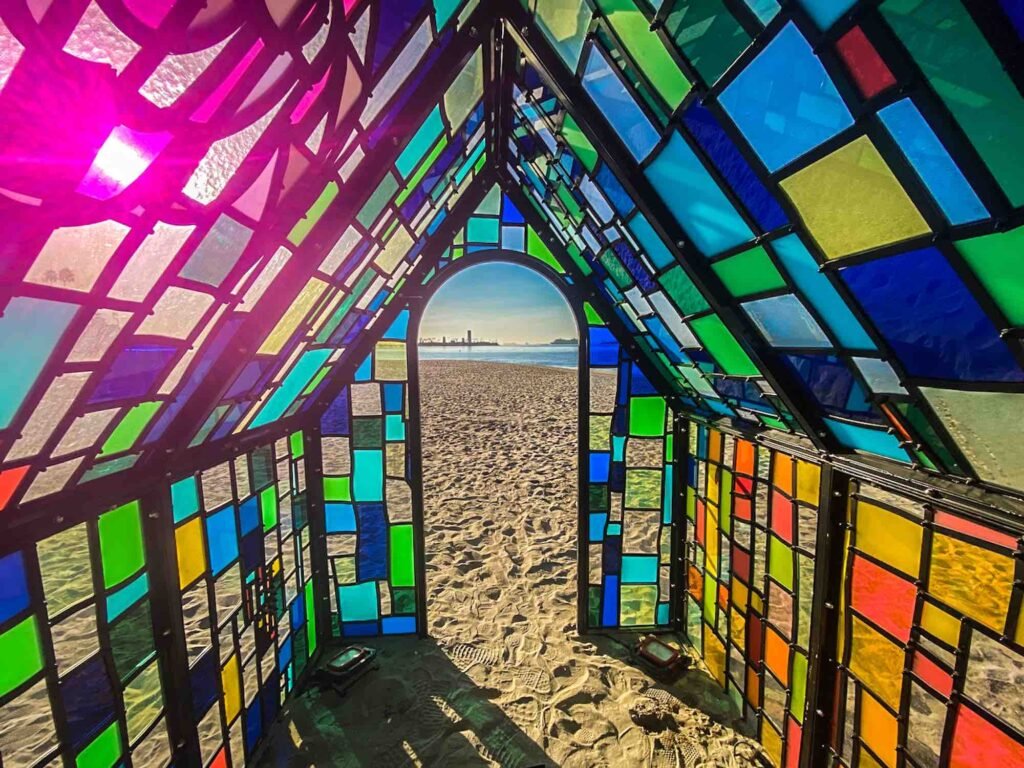
Echoing Leeman’s sentiments, the reason for its popularity is quite simple.At its base, the glass house is something much needed in the pandemic: a simple breath of beauty, an escape from whatever political woes may be stretching you too thin, a way to take in the light of the sun in a colorfully unique way.It frames the THUMS oil islands and the Queen Mary in distinct ways while giving everyone who passes it a moment to pause. Within a 15-minute span, one can see nearly every single walker (and the occasional bicyclist) stop, step off the path, and come closer.
This isn’t to say the piece lacks a political perspective.The sculpture is constructed from collected trash by Fruin, a UC Santa Barbara graduate who fled to New York City to find colorful, discarded bits of plexiglass in the streets, gutters, and trash bins of the city.

While the easy explanation is that one man’s trash is another treasures, the real treasure of the sculpture is the way in which it simultaneously expresses its origins as debris and its rebirth as a technicolor sun dwelling.From afar, the house’s lines are seemingly perfect, straight edges but, as one gets closer, the incongruent shapes and lines highlight and frame the imperfection of the colored pieces.
The result? A stunningly escapist piece of art that is worth visiting before it leaves tomorrow morning.
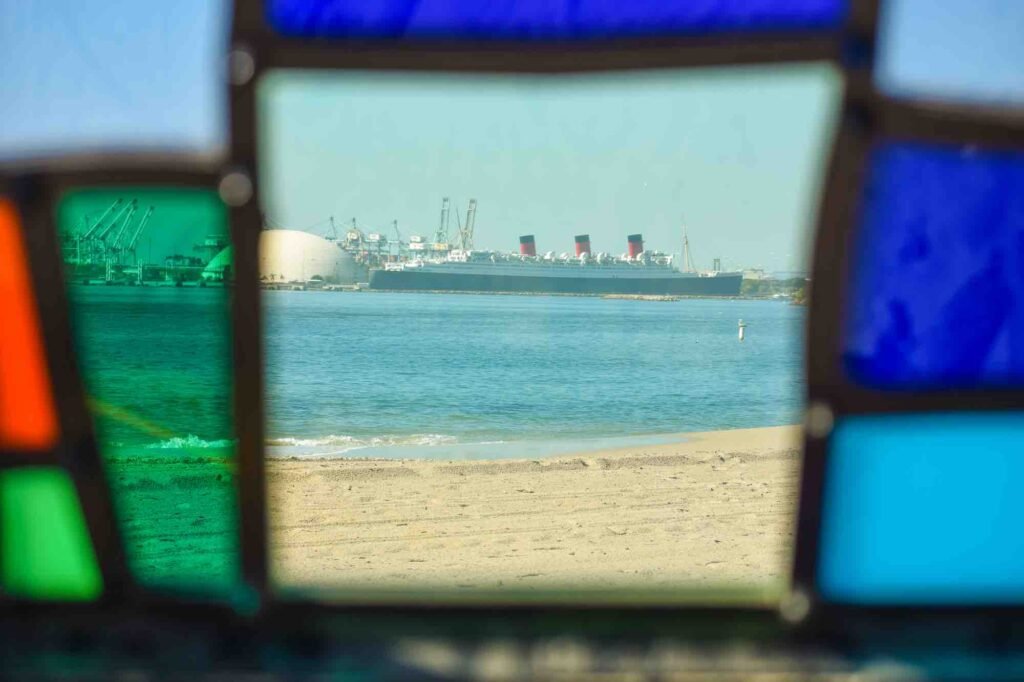



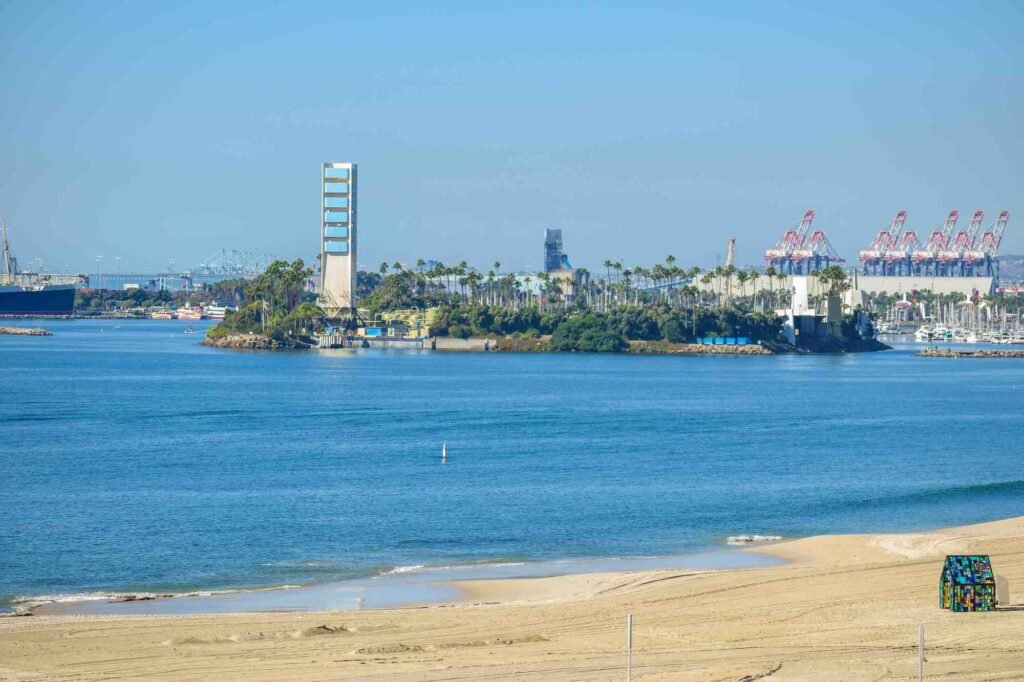
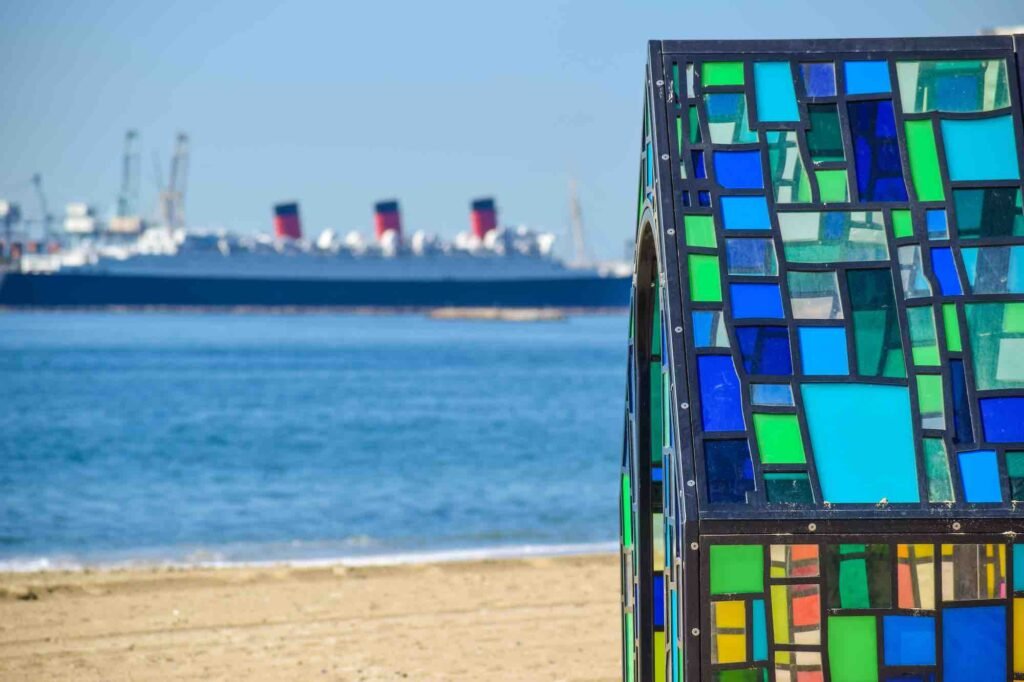

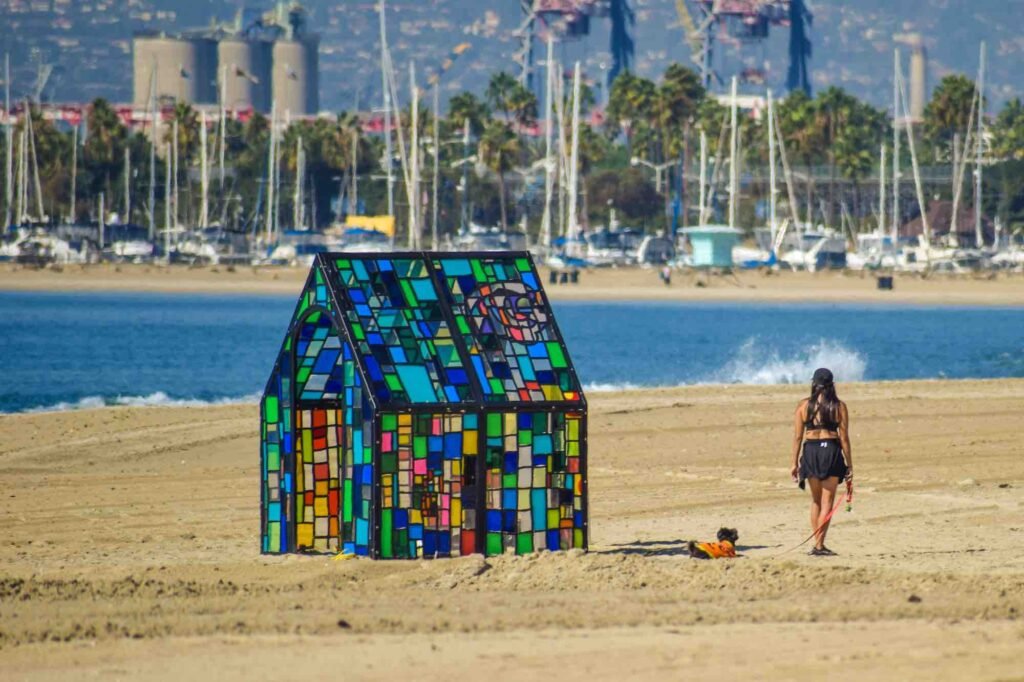
Camouflage House is located on the shoreline of Long Beach, just west of the Junipero parking lot and Bixby Park. It can be accessed by using the ramps along Bixby Park’s bluff or by entering the 14th Place stairs south of Ocean Blvd.

